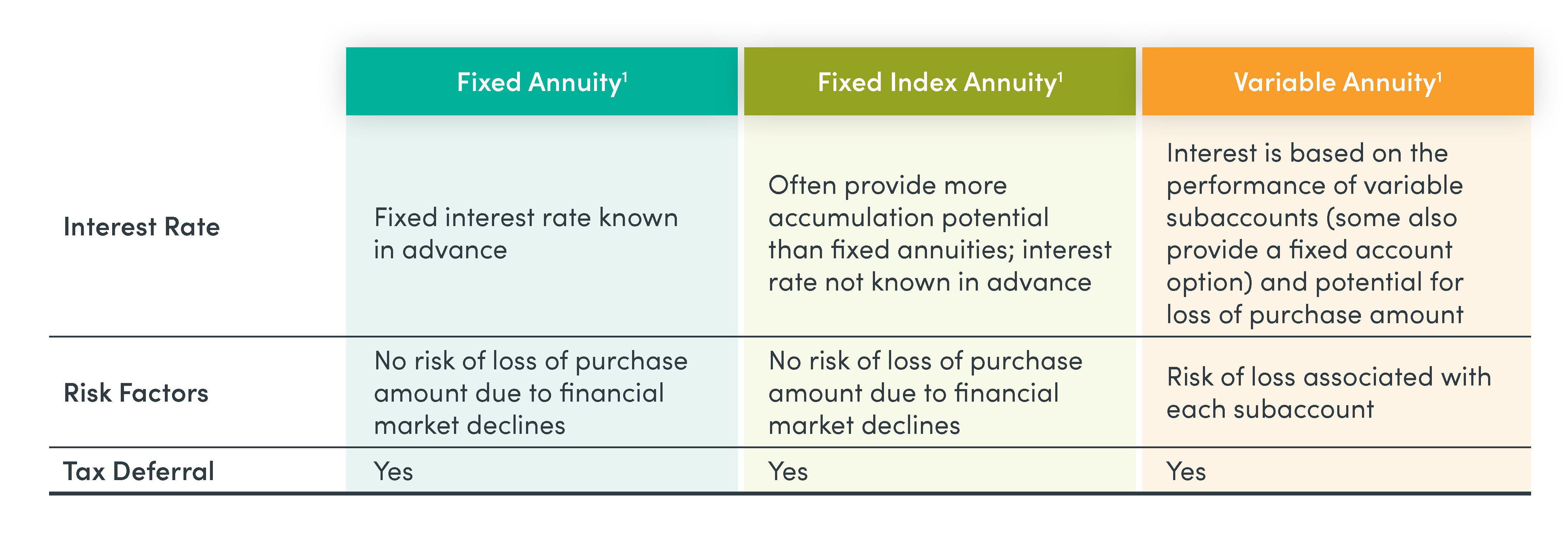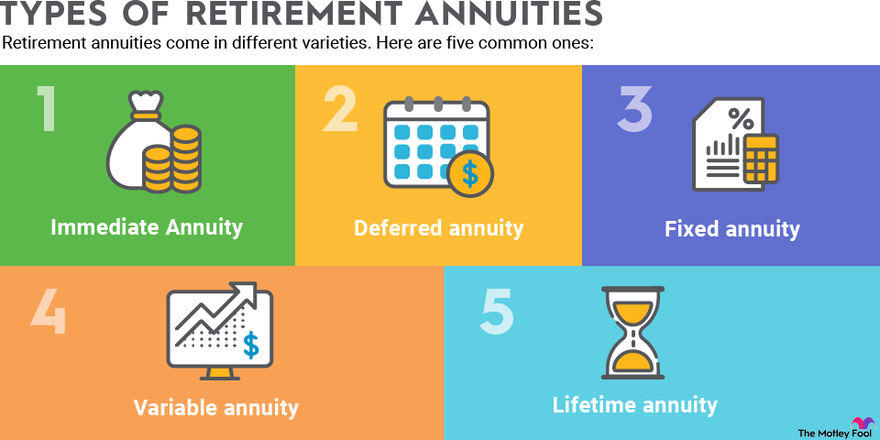Featured
Table of Contents
Simply as with a taken care of annuity, the owner of a variable annuity pays an insurance business a round figure or series of settlements for the promise of a collection of future payments in return. Yet as stated above, while a fixed annuity expands at an ensured, consistent rate, a variable annuity grows at a variable price that depends upon the efficiency of the underlying investments, called sub-accounts.

During the build-up stage, assets bought variable annuity sub-accounts grow on a tax-deferred basis and are tired only when the agreement owner withdraws those incomes from the account. After the build-up stage comes the revenue stage. With time, variable annuity possessions must theoretically boost in worth until the contract proprietor determines she or he wish to start taking out money from the account.
The most considerable concern that variable annuities typically existing is high expense. Variable annuities have several layers of costs and expenses that can, in aggregate, create a drag of as much as 3-4% of the agreement's worth each year. Below are one of the most usual costs related to variable annuities. This cost makes up the insurance company for the danger that it presumes under the terms of the contract.
Understanding Annuities Variable Vs Fixed A Comprehensive Guide to Annuities Variable Vs Fixed What Is What Is Variable Annuity Vs Fixed Annuity? Pros and Cons of Various Financial Options Why Choosing the Right Financial Strategy Is Worth Considering Annuities Fixed Vs Variable: Simplified Key Differences Between Tax Benefits Of Fixed Vs Variable Annuities Understanding the Key Features of Long-Term Investments Who Should Consider Strategic Financial Planning? Tips for Choosing the Best Investment Strategy FAQs About Planning Your Financial Future Common Mistakes to Avoid When Choosing Choosing Between Fixed Annuity And Variable Annuity Financial Planning Simplified: Understanding Your Options A Beginner’s Guide to Variable Annuity Vs Fixed Annuity A Closer Look at Pros And Cons Of Fixed Annuity And Variable Annuity
M&E cost fees are computed as a percent of the contract worth Annuity companies hand down recordkeeping and various other management costs to the contract owner. This can be in the kind of a flat annual charge or a percent of the contract value. Administrative costs may be included as component of the M&E danger cost or may be analyzed individually.
These costs can range from 0.1% for passive funds to 1.5% or even more for actively managed funds. Annuity agreements can be customized in a variety of means to offer the specific needs of the contract proprietor. Some common variable annuity riders include ensured minimal buildup benefit (GMAB), ensured minimum withdrawal advantage (GMWB), and ensured minimum revenue advantage (GMIB).

Variable annuity contributions supply no such tax obligation reduction. Variable annuities often tend to be highly ineffective cars for passing wealth to the future generation due to the fact that they do not enjoy a cost-basis modification when the initial agreement proprietor dies. When the owner of a taxable financial investment account passes away, the cost bases of the financial investments kept in the account are gotten used to mirror the market costs of those financial investments at the time of the proprietor's fatality.
Analyzing Annuities Variable Vs Fixed Key Insights on Your Financial Future What Is the Best Retirement Option? Features of Smart Investment Choices Why Fixed Interest Annuity Vs Variable Investment Annuity Matters for Retirement Planning How to Compare Different Investment Plans: A Complete Overview Key Differences Between Different Financial Strategies Understanding the Rewards of Fixed Index Annuity Vs Variable Annuities Who Should Consider Variable Annuity Vs Fixed Annuity? Tips for Choosing the Best Investment Strategy FAQs About Fixed Vs Variable Annuity Common Mistakes to Avoid When Choosing a Financial Strategy Financial Planning Simplified: Understanding Your Options A Beginner’s Guide to Smart Investment Decisions A Closer Look at Fixed Vs Variable Annuity Pros Cons
As a result, heirs can inherit a taxed investment portfolio with a "fresh start" from a tax obligation viewpoint. Such is not the instance with variable annuities. Investments held within a variable annuity do not obtain a cost-basis adjustment when the initial proprietor of the annuity passes away. This indicates that any kind of built up unrealized gains will be handed down to the annuity proprietor's successors, in addition to the associated tax obligation concern.
One substantial issue connected to variable annuities is the possibility for conflicts of interest that may feed on the component of annuity salespeople. Unlike a financial consultant, that has a fiduciary responsibility to make financial investment choices that benefit the customer, an insurance coverage broker has no such fiduciary obligation. Annuity sales are extremely profitable for the insurance coverage experts who market them because of high ahead of time sales compensations.

Several variable annuity contracts include language which positions a cap on the percent of gain that can be experienced by specific sub-accounts. These caps stop the annuity owner from totally taking part in a portion of gains that might or else be appreciated in years in which markets produce substantial returns. From an outsider's viewpoint, presumably that financiers are trading a cap on financial investment returns for the aforementioned ensured flooring on financial investment returns.
As noted above, surrender charges can seriously restrict an annuity owner's capability to relocate assets out of an annuity in the early years of the contract. Better, while most variable annuities enable agreement proprietors to withdraw a defined amount during the accumulation stage, withdrawals yet quantity typically cause a company-imposed fee.
Withdrawals made from a fixed interest rate financial investment option might also experience a "market price change" or MVA. An MVA readjusts the worth of the withdrawal to mirror any kind of adjustments in rate of interest from the time that the cash was purchased the fixed-rate choice to the time that it was taken out.

Quite usually, even the salespeople who market them do not completely recognize just how they function, and so salespeople in some cases prey on a purchaser's feelings to offer variable annuities instead of the values and viability of the items themselves. Our team believe that investors must totally comprehend what they possess and exactly how much they are paying to possess it.
Decoding How Investment Plans Work Everything You Need to Know About Financial Strategies What Is the Best Retirement Option? Features of Smart Investment Choices Why Fixed Income Annuity Vs Variable Growth Annuity Is a Smart Choice Fixed Vs Variable Annuity Pros And Cons: Simplified Key Differences Between What Is Variable Annuity Vs Fixed Annuity Understanding the Rewards of Fixed Interest Annuity Vs Variable Investment Annuity Who Should Consider Strategic Financial Planning? Tips for Choosing What Is A Variable Annuity Vs A Fixed Annuity FAQs About Planning Your Financial Future Common Mistakes to Avoid When Choosing Pros And Cons Of Fixed Annuity And Variable Annuity Financial Planning Simplified: Understanding Annuities Variable Vs Fixed A Beginner’s Guide to Smart Investment Decisions A Closer Look at How to Build a Retirement Plan
However, the same can not be stated for variable annuity possessions kept in fixed-rate financial investments. These properties legally belong to the insurance coverage business and would as a result be at threat if the firm were to stop working. Any kind of warranties that the insurance firm has actually concurred to provide, such as an assured minimum income benefit, would certainly be in concern in the occasion of an organization failing.
Potential purchasers of variable annuities ought to comprehend and consider the financial problem of the issuing insurance company before getting in right into an annuity agreement. While the advantages and drawbacks of numerous types of annuities can be discussed, the actual issue bordering annuities is that of viability.
Besides, as the stating goes: "Purchaser beware!" This post is prepared by Pekin Hardy Strauss, Inc. Deferred annuities explained. ("Pekin Hardy," dba Pekin Hardy Strauss Wide Range Management) for informational functions only and is not planned as a deal or solicitation for service. The info and information in this short article does not comprise legal, tax obligation, audit, investment, or various other professional recommendations
Table of Contents
Latest Posts
Understanding Financial Strategies Key Insights on Annuities Variable Vs Fixed What Is Fixed Vs Variable Annuities? Features of Smart Investment Choices Why Choosing the Right Financial Strategy Matte
Exploring Pros And Cons Of Fixed Annuity And Variable Annuity A Closer Look at How Retirement Planning Works Breaking Down the Basics of Fixed Income Annuity Vs Variable Annuity Benefits of Choosing t
Highlighting the Key Features of Long-Term Investments A Comprehensive Guide to Investment Choices Breaking Down the Basics of Investment Plans Advantages and Disadvantages of Different Retirement Pla
More
Latest Posts